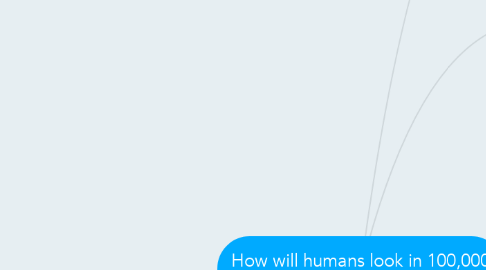
1. How does change occur?
1.1. Nature of Science Emphasis
1.1.1. NS1: The goal of science is knowledge about the natural world
1.1.2. NS2: Scientific knowledge and theories develop through hypotheses, the collection of evidence, investigation and the ability to provide explanations
1.2. Biology 20- GLO 2: Students will explain the mechanisms involved in the change of populations over time.
1.2.1. 20-B2.1k: Explain that variability in a species results from heritable mutations and that some mutations may have a selective advantage
1.2.2. 20-B2.2k: Discuss the significance of sexual reproduction to individual variation in populations and to the process of evolution
2. How can we measure or organize change?
2.1. Nature of Science Emphasis
2.1.1. NS6: Scientific paradigms are conceptual inventions that help organize, interpret and explain findings − Concepts, models and theories are often used in interpreting and explaining observations and in predicting future observations (NS6a) − Conventions of mathematics, nomenclature and notation provide a basis for organizing and communicating scientific theory, relationships and concepts; e.g., chemical symbols (NS6b) − Scientific language is precise, and specific terms may be used in each field of study (NS6c)
2.1.2. AI-NS1: Apply appropriate terminology, classification systems and nomenclature used in the sciences
2.2. Aboriginal Studies 20-GLO 1: Students will demonstrate an understanding of aspects of Aboriginal spirituality and worldviews.
2.2.1. Examine how animate and inanimate objects are interrelated and respected in Aboriginal cultures
2.3. Biology 20- GLO 2: Students will explain the mechanisms involved in the change of populations over time.
2.3.1. 20-B2.5k: Explain speciation and the conditions required for this process
3. How have species changed throughout history?
3.1. Biology 20- GLO 2: Students will explain the mechanisms involved in the change of populations over time.
3.1.1. 20.B2.4k: Summarize and describe lines of evidence to support the evolution of modern species from ancestral forms; i.e., the fossil record, Earth’s history, biogeography, homologous and analogous structures, embryology, biochemistry
3.2. Biology 20-STS: a) Describe how paleontology and the role of evidence in the accumulation of knowledge have provided invaluable data for theories explaining observable variations in organisms over time (Burgess Shale) b) Discuss geologic evidence and probable causes for past mass extinctions and contrastthese to the forces driving the current decline in species.
3.3. Aboriginal Studies 20-GLO 3: Students will demonstrate an understanding of the effects of government policies, legislation and practices on Aboriginal cultures and peoples.
3.3.1. 3. Demonstrate an understanding of the impact of change upon Aboriginal peoples (ie. disease)
4. How can we predict change?
4.1. Nature of Science Emphasis
4.1.1. NS3: Scientific knowledge results from peer review and replication of the research of others
4.2. Biology 20-GLO 2: Students will explain the mechanisms involved in the change of populations over time.
4.2.1. 20-B2.3k: Compare Lamarckian and Darwinian explanations of evolutionary change
4.2.2. 20-B2.6k: Describe modern evolutionary theories; i.e., punctuated equilibrium, gradualism.
4.3. Biology 20-STS: Explain that scientific knowledge and theories develop through hypotheses, the collection of evidence, investigation and the ability to provide explanations
5. What causes organisms to change?
5.1. Biology 20- GLO 2: Students will explain the mechanisms involved in the change of populations over time.
5.1.1. 20-B2.5k: Explain speciation and the conditions required for this process
